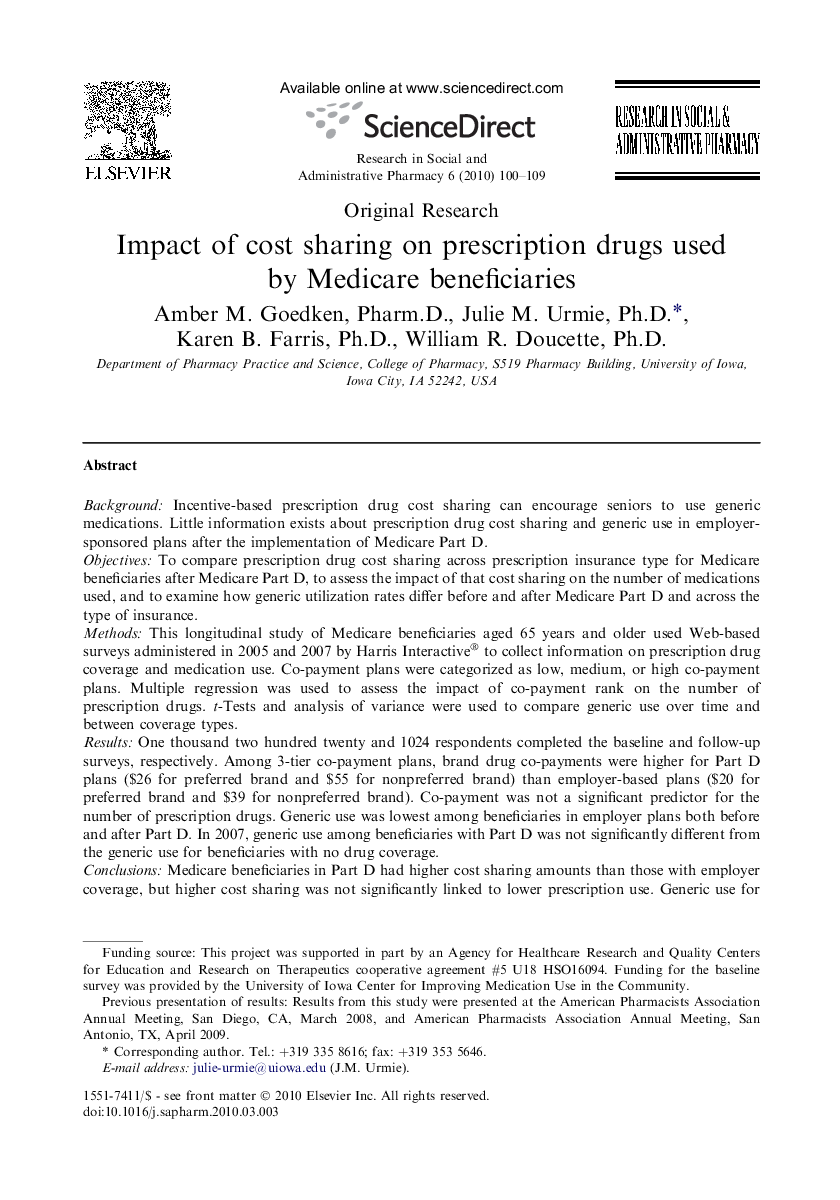| Article ID | Journal | Published Year | Pages | File Type |
|---|---|---|---|---|
| 2509118 | Research in Social and Administrative Pharmacy | 2010 | 10 Pages |
BackgroundIncentive-based prescription drug cost sharing can encourage seniors to use generic medications. Little information exists about prescription drug cost sharing and generic use in employer-sponsored plans after the implementation of Medicare Part D.ObjectivesTo compare prescription drug cost sharing across prescription insurance type for Medicare beneficiaries after Medicare Part D, to assess the impact of that cost sharing on the number of medications used, and to examine how generic utilization rates differ before and after Medicare Part D and across the type of insurance.MethodsThis longitudinal study of Medicare beneficiaries aged 65 years and older used Web-based surveys administered in 2005 and 2007 by Harris Interactive® to collect information on prescription drug coverage and medication use. Co-payment plans were categorized as low, medium, or high co-payment plans. Multiple regression was used to assess the impact of co-payment rank on the number of prescription drugs. t-Tests and analysis of variance were used to compare generic use over time and between coverage types.ResultsOne thousand two hundred twenty and 1024 respondents completed the baseline and follow-up surveys, respectively. Among 3-tier co-payment plans, brand drug co-payments were higher for Part D plans ($26 for preferred brand and $55 for nonpreferred brand) than employer-based plans ($20 for preferred brand and $39 for nonpreferred brand). Co-payment was not a significant predictor for the number of prescription drugs. Generic use was lowest among beneficiaries in employer plans both before and after Part D. In 2007, generic use among beneficiaries with Part D was not significantly different from the generic use for beneficiaries with no drug coverage.ConclusionsMedicare beneficiaries in Part D had higher cost sharing amounts than those with employer coverage, but higher cost sharing was not significantly linked to lower prescription use. Generic use for Part D beneficiaries was higher than that for beneficiaries with employer coverage but the same as that for beneficiaries without drug coverage.
